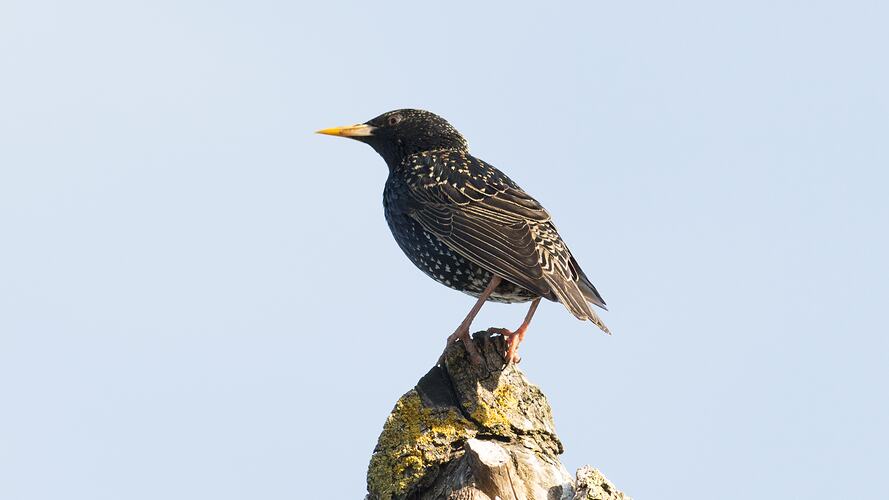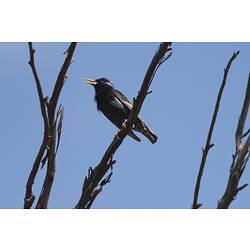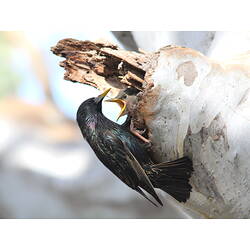General Description
Body shiny, dark green-black, with brown edges on the wing feathers. When not breeding, body spotted brown and white. Bill yellow, legs black. Body up to 20 cm long.
Biology
Starlings were introduced in the 1850s and have become a common pest. In winter, they roost in large flocks. They mainly eat adult and larval insects and other invertebrates, but will also eat small lizards and frogs as well as seeds and nectar.
Distribution
Eastern and southern mainland Australia and Tasmania.
Habitat
Woodlands, farmlands and urban areas.
More Information
-
Animal Type
-
Animal SubType
-
Brief Id
Dark body, yellow bill.
-
Colours
Black, Brown
-
Habitats
-
Diet
Omnivore
-
Endemicity
-
Conservation Statuses
CITES: Not listed, FFG Threatened List: Not listed, EPBC Act 1999: Not listed, IUCN Red List: Least Concern
-
Taxon Name
-
Common Name
Common Starling
-
Kingdom
-
Phylum
-
Subphylum
-
Class
-
Order
-
Family
-
Genus
-
Species Name
vulgaris




